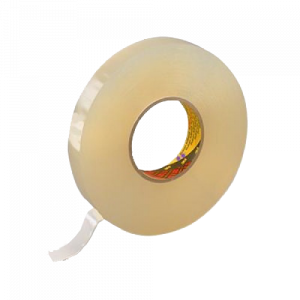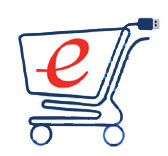The sign, printing and graphics industry is one that involves constant innovation and requires solutions to unique challenges. Signage and graphical printing are now commonplace in nearly every environment, and are applied to a growing number of surfaces and modern materials.
Adhesives are playing an increasingly important role in the industry as they provide ways to adhere modern materials, allow improved aesthetics and reduce the cost of mechanical fasteners. Double-sided acrylic foam tapes like VHB from 3M and similar brands are used particularly in permanently adhere all types of signage quickly, easily and reliably.
What are structural bonding tapes?
Structural bonding tapes are generally coated acrylic foam. These tapes can vary in thickness from under .5mm to over 2mm. They come in rolls covered by a release liner and are easily applied to  cleaned surfaces as regular tape would be. When the release liner is removed and the surfaces are pressed together, adhesive begins flowing and bonding to each surface. In general, 50 percent of the bond strength is achieved after 20 minutes, with 90 percent after 24 hours and 100 percent after 72 hours.
cleaned surfaces as regular tape would be. When the release liner is removed and the surfaces are pressed together, adhesive begins flowing and bonding to each surface. In general, 50 percent of the bond strength is achieved after 20 minutes, with 90 percent after 24 hours and 100 percent after 72 hours.
These tapes come in a few different families, for bonding different substrates. They generally provide excellent bond strengths on a number of materials, including metal, glass and plastics. Special formulations are available for low surface energy materials like polyethylene and polypropylene, and others can be used for plasticized vinyl – unlike some other adhesives. Adhesives’ foam-core construction also allows for thermal expansion and contraction, even between dissimilar substrates.
Unique advantages of adhesive tapes
Structural bonding tapes provide some unique advantages, particularly over mechanical fasteners, but also in comparison to other adhesives. The bonds formed have extremely high tensile strength, as well as resistance to moisture and chemical attack. They perform better than rivets or bolts in many cases, not only because of their high strength, but because their uniformity allows stress to be spread across the entire bond line.
Their foam-core construction also allows for thermal expansion and contraction, even between dissimilar substrates, increasing the life span of bonded parts. They are simpler to use than other adhesive methods because they require no mixing or clean up and can be applied by hand without specialised equipment.
How are they being used?
 In the sign, printing and graphics industry, tapes are used for a number of permanent bonding solutions. They are used to attach road signs to metal backings and stiffeners, as well as other general-purpose metal signage. Structural bonding tapes can attach dissimilar substrates, so attachment metal to concrete or other architectural materials is possible. Both large and small exterior signs for businesses can be adhered with tapes – like large acrylic lettering or placards. They can also be used to apply architectural panels with seamless construction and around contoured profiles.
In the sign, printing and graphics industry, tapes are used for a number of permanent bonding solutions. They are used to attach road signs to metal backings and stiffeners, as well as other general-purpose metal signage. Structural bonding tapes can attach dissimilar substrates, so attachment metal to concrete or other architectural materials is possible. Both large and small exterior signs for businesses can be adhered with tapes – like large acrylic lettering or placards. They can also be used to apply architectural panels with seamless construction and around contoured profiles.
 Shop our range of adhesive tapes here.
Shop our range of adhesive tapes here.
Additional Links
If you have any questions about adhesive tapes, we know a man who can help! Ask The Ellsworth Adhesives Glue Doctor!
The content for this month’s blog post was provided by Gluespec® – a service of Ellsworth Adhesives.
Gluespec helps engineers to discover adhesives and other materials for their industrial applications.
